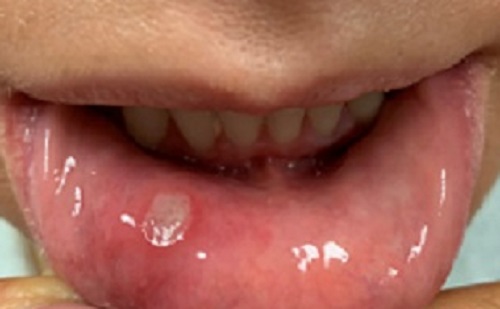Overview of recurrent aphthous ulcerative disease
Recurrent aphthous ulcerative disease is the most common cause of nontraumatic ulcers of the oral mucosa. The disease has an immune-mediated pathogenesis and is characterised by the periodic eruption of painful ulceration of the oral mucosa. Aphthous ulcers can occur acutely with smoking cessation, but these usually resolve with time, or can be triggered by trauma (eg toothbrushing, orthodontic appliances—see Traumatic mouth ulcers).
The ulcers usually occur on the mucosa of the cheek, lip and floor of the mouth, but can occasionally affect the mucosa of the gingivae and hard palate. Three forms of aphthous ulcers are recognised:
-
Minor aphthous ulcers (see Minor aphthous ulcer of the mandibular labial mucosa)
- most common form
- presents as smaller lesions (usually 2 to 4 mm in diameter)
- occur a few at a time
- heal within 7 to 10 days.
-
Major aphthous ulceration
- less common form
- presents as larger lesions (10 mm or more in diameter)
- can persist for up to 6 weeks (and occasionally months)
- heal with submucosal scarring.
-
Herpetiform aphthous ulceration
- rare
- presents as recurrent crops of nonvesicular small ulcers (1 to 2 mm in diameter) that coalesce to form larger ulcers
- heal within 1 to 2 weeks
- not caused by the herpes virus, so do not have a cluster pattern.
Assessment of aphthous ulcers involves taking a thorough history and examination; see also 'red flag' features of oral mucosal disease. In children, investigate for systemic causes of nontraumatic ulceration. In adults who have additional symptoms, investigate for a systemic cause. Systemic causes of aphthous ulcers include:
- iron, vitamin B12, folate or zinc deficiency
- coeliac disease
- ulcerative colitis
- Behçet syndrome
- PFAPA (periodic fever, aphthous stomatitis, pharyngitis, cervical adenitis) syndrome in children.
Deficiencies should be treated only on laboratory confirmation—see here for the management of vitamin, mineral and trace element deficiencies.

